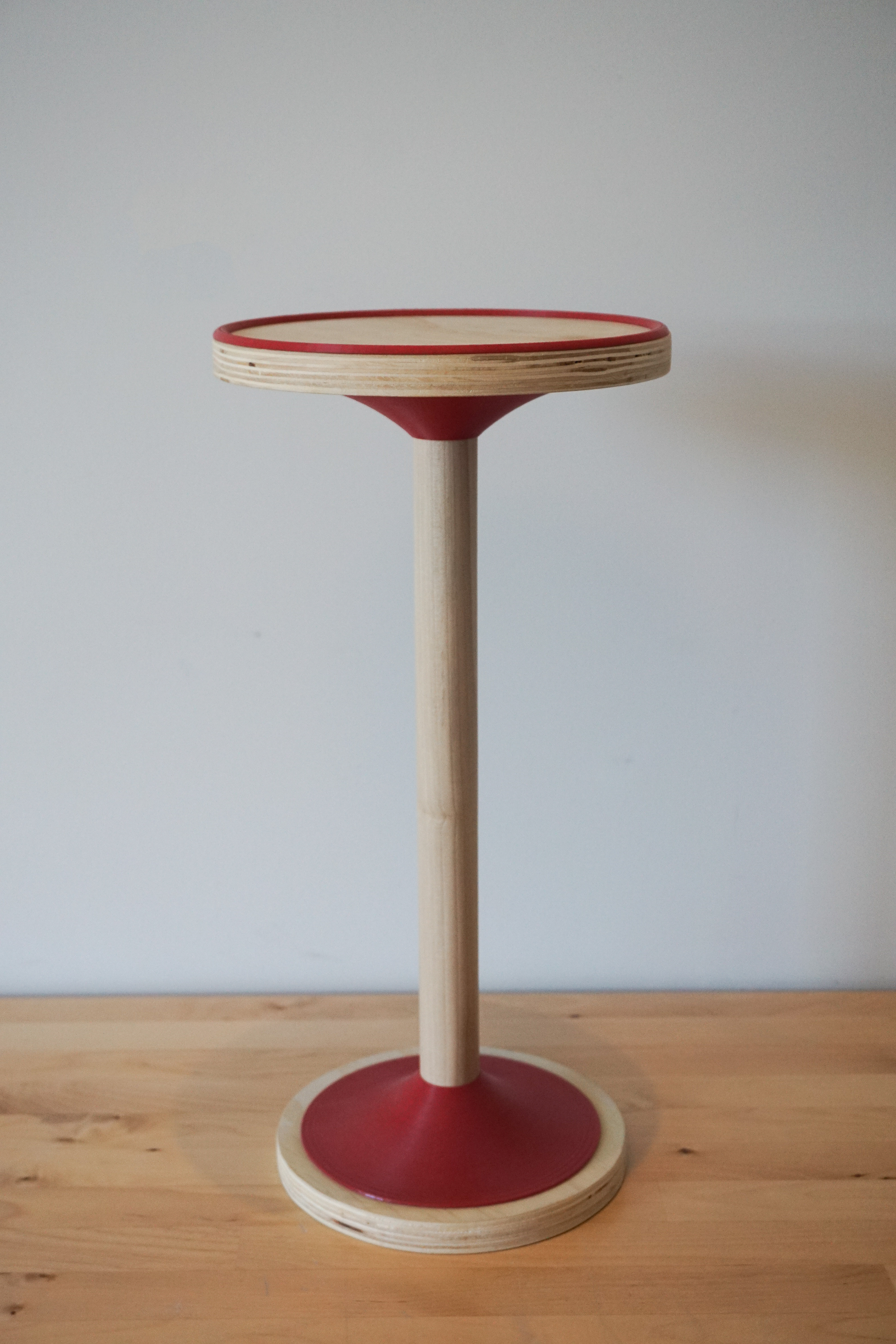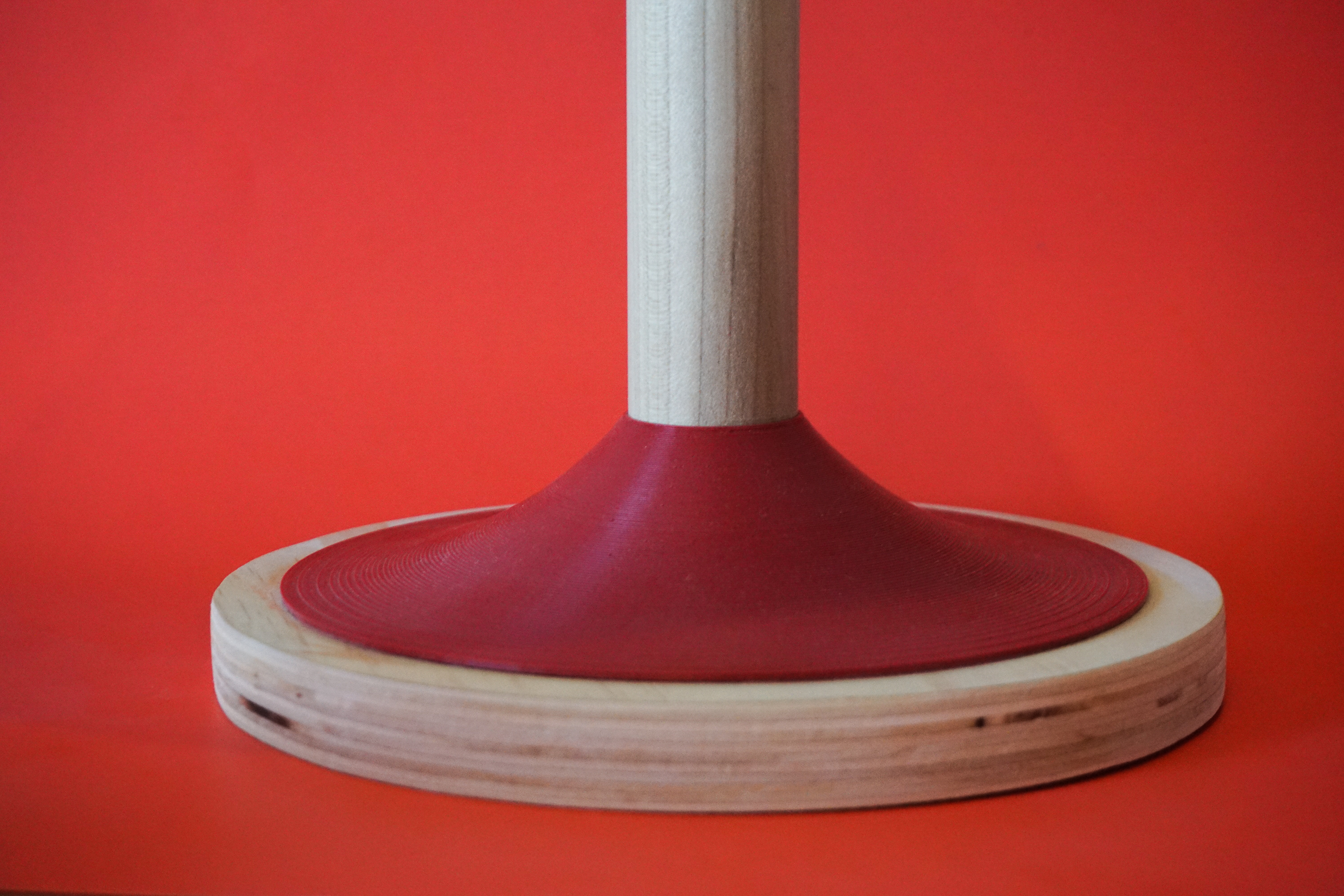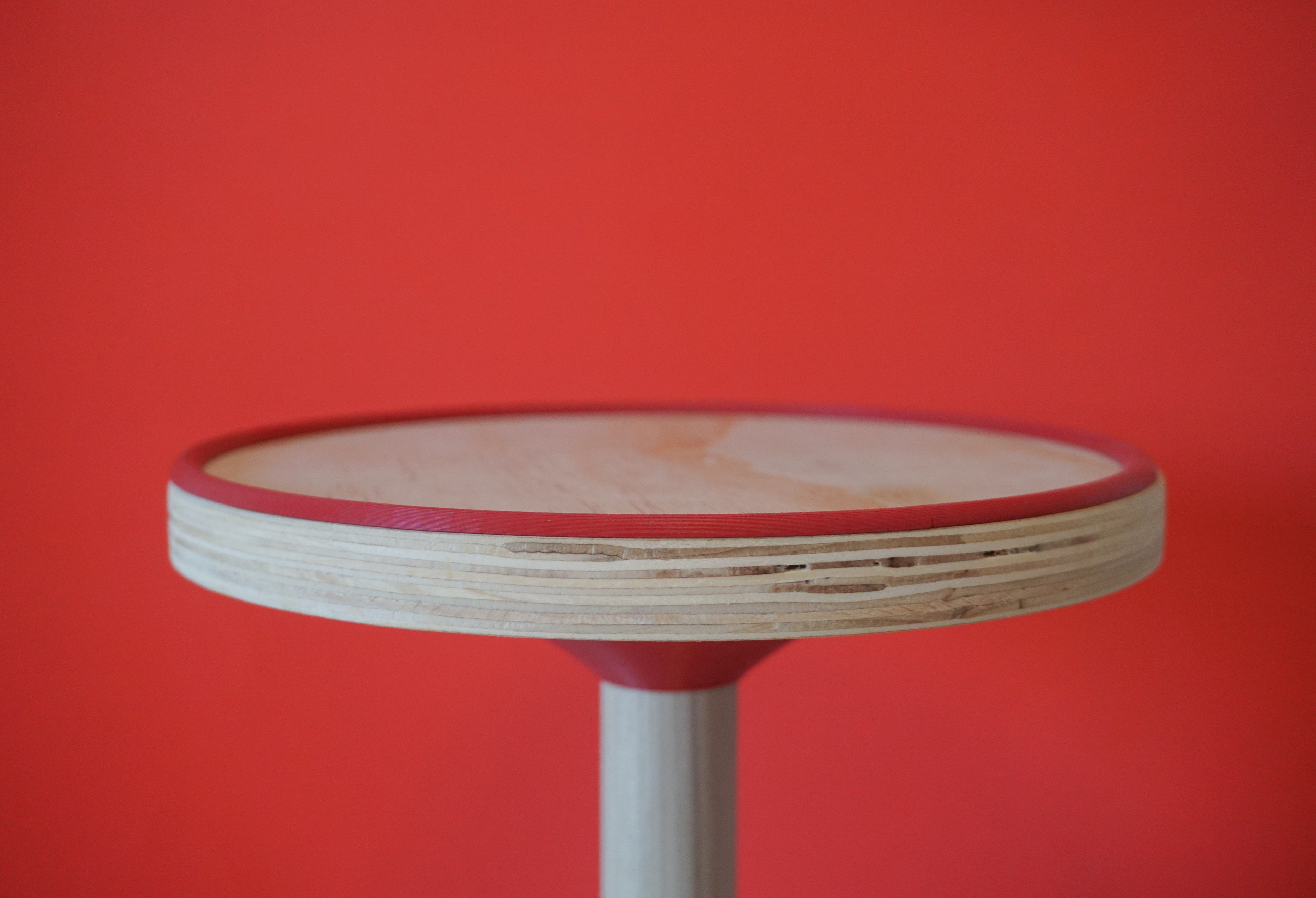For nearly a decade, I used a cardboard box as a nightstand. As an upgrade, I wanted to make a new, more permanent, intentionally-designed stand, constrained by the challenge of only using scrap wood and 3D-printed parts.
Since I only had access to a basic hand-router, drill, and saw, I worked to create the simplest design possible—comprised of a base, stem, and tabletop. To cut the circular wooden base and tabletop, I used my hand router in collaboration with a 3D-printed jig I designed to ensure perfectly round cut circles. These wooden components were then attached to 3D-printed connector pieces, which snugly fit around a central wooden dowel. I also added a subtle lip to the top of the table, ensuring no items would easily slide off.
The final design costs around ten dollars to make and can be taken apart for storage or transportation. I designed the 3D-printed components as parametric models, allowing me to adjust the design for any diameter dowel or desired table size.


